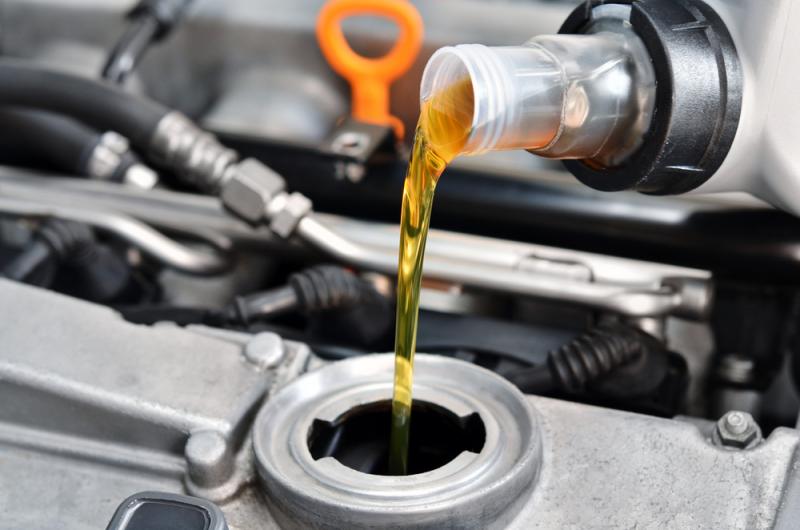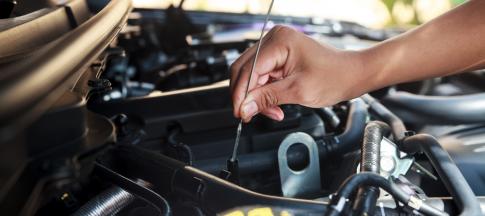
Driving a car with defects could not only be illegal, but dangerous too – not just for you, but for your passengers and other road users.
You can tackle lots of simple maintenance tasks yourself, but it's important to leave some jobs to the professionals with the specialist equipment and expertise.
Why do I need to maintain my car?
A well-maintained car is:
- less likely to break down because of a common fault
- more efficient, so you'll save on fuel
- often cheaper to fix because problems are caught earlier
- more environmentally friendly because it runs cleaner and is more economical
- likely to have a higher resale value and a longer life
The laws around car maintenance
The UK Government states that "you’re responsible for making sure your vehicle is always safe to drive (‘roadworthy’). It can be unsafe even if you have a current MOT certificate."
By law, you're responsible for maintaining the roadworthiness of your vehicle, so if you're driving on public roads, you must have a valid MOT – the yearly test of roadworthiness.
Only drivers whose cars are less than three years old and those whose vehicles are over 40 years old are exempt.
You can be fined up to £1,000 if you're caught without a valid certificate, but that's not the end of it.
You can be fined up to £2,500, be banned from driving and/or face three penalty points if you're found driving a ‘dangerous’ vehicle without an MOT.
Should I do my own car maintenance?
It should be possible to carry out most regular car maintenance checks yourself and even some minor repair jobs.
But you should only tackle these if you're highly skilled and have access to the right tools and equipment. Some tasks are best left to the professionals.
That said, some repair jobs are surprisingly easy if you do your research. For instance, replacing a broken door mirror or headlight unit is usually possible.
You won't just save money on labour, but you'll also be able to order the new (or nearly new in some cases) parts yourself.
The most common causes of breakdown typically are:
- battery-related
- wheel and tyre-related
- engine management issues
- electrical faults
- engine faults
Video guides
If you want a little extra helping hand when doing your own DIY, we've put together some video guides on car maintenance.
Battery maintenance (DIY)
Flat batteries are the biggest cause of breakdowns, especially during the winter.
The electrolyte level in the battery should always be within the specified limit on the outside of the battery.
This should be checked monthly and topped up with distilled water if necessary.
Also, check regularly for signs of corrosion or dirt on top of the battery and around the terminals and connections.
If you do spot any corrosion, you should clean the battery to prevent any problems.
If your car battery dies and can't be recharged, you could tackle replacing it if you're up for a challenge but do your research first and stick to the safety guidelines.
Checking your engine coolant (DIY)
Check the coolant level regularly if you want to avoid your engine overheating and make sure you maintain the correct water/anti-freeze mix.
It only takes a minute, but it could save you a lot of money and hassle.
The mix is usually 50/50, but it's best to check your car's manual and ideally you want the protection level to be as low as -25°C.
Only check and top up your coolant when the engine is cool.
Also, listen out for the cooling fan. It should cut in when you're idling after a run, for example.
Tyre maintenance (DIY/professional)
Check all four tyres for damage and tread depth regularly and keep them pumped up to the correct pressure.
Legally, the depth of the tread must be at least 1.6mm but, for peace of mind, 2-3mm is recommended.
Remember, driving with defective tyres isn't just illegal, it's dangerous too.
If you need a replacement, it's best to go to a professional tyre fitter or call a mobile company because it's a skilled job and specialist equipment is used.
Lights (DIY)
Legally, all your car's exterior lights must be operational – that's everything from the headlights to indicators, and even the number plate bulb.
Check them regularly, and if you can't test them all yourself, ask a friend or member of your family to help you check them.
It's also worth cleaning the lenses so that you can see clearly, and other road users can see you.
It's possible to change headlight bulbs yourself, for instance, but sometimes it’s difficult to access from within the engine bay so you may have no alternative but to go to a garage.
Windscreen washer/wipes (DIY)
Faulty wiper/blades and washers are one of the most common reasons for an MOT fail.
Legally, you must make sure they're all working correctly, and the windscreen isn't chipped or cracked.
Make sure the wiper blades are clean and don't leave smears and streaks, and the windscreen wash is squirting up the windscreen correctly.
Ideally, invest in washer fluid capable of withstanding temperatures of at least -15°C so you can keep your windscreen clear and clean whatever the weather.
Engine oil (DIY)
To avoid expensive engine damage and a potential breakdown, regularly check the oil level on your engine's dipstick and keep the oil topped up.
Keep an eye out for leaks, and remember, too little or too much oil can both cause engine problems.
Finally, don't just buy the cheapest engine oil, check your car's manual for the correct type (e.g. 5w30 or 10w30) and buy a reputable brand.
Brakes, clutch, exhaust, suspension (professional)
These are some of the most common repair jobs for garages, and unless you're highly skilled, they're best left to the experts.
Problems with your brakes, clutch, exhaust or suspension are likely to be flagged up to you during your annual service and/or MOT.
On a day-to-day level, there may also be tell-tale signs that something is wrong.
For instance, you'll probably notice if your exhaust is noisier than normal, or ‘blowing', while your car might start pulling to one side when you brake if there's an issue with the brake pads or discs.
MOT (professional)
There's no way around an MOT (annual test of roadworthiness) unless your car is exempt,. It must be carried out by a qualified tester at a designated MOT Test Centre.
However, there are plenty of things you can check yourself before taking your car in for its MOT test.
Servicing (DIY/professional)
It's recommended that your car receives a full service every 12,000 miles or every 12 months – whichever comes sooner.
If you're trained as a mechanic, you have the right equipment and the time, then it's possible to service your own car.
An annual service should include an oil and filter replacement, plus top-ups for the coolant, windscreen wash, brake fluid and power steering.
However, there should also be checks on everything from the condition of the brake discs and pads to the shock absorbers and exhaust.
Again, servicing a car requires expert knowledge and specialist equipment, so is usually left to the professionals.
Wheel alignment and balancing checks (professional)
If your vehicle's suspension geometry is incorrect (the wheels and axles aren't aligned), it's worth having your car's wheel alignment (also known as tracking) checked.
Not only will it maximise your tyres lifespan, but it could affect your car's handling. For instance, your car might pull or drift to one side.
Wheel balancing is often confused with wheel alignment, but they're completely different.
If you've noticed a vibration through the steering wheel or the whole car when you reach a particular speed, it may be due to incorrectly balanced wheels which can cause your tyres, suspension and steering to wear prematurely.
Your tyres should always be balanced when they're replaced. Both jobs require specialist equipment and skills, so you'll have to go to a tyre fitter or garage.
Bodywork (DIY/professional)
Prevention is better than a cure when it comes to keeping rust at bay, so it's worth washing and waxing your car all year.
This is especially important during the winter when roads are treated with salt which can cause corrosion.
Jet washing your car regularly throughout the winter is a good idea, paying particular attention to alloy wheels, wheel arches and the underside.
You might also want to consider buying a good quality cover if your car is left outside all winter.
Check out our guide to giving your car a winter health check.
I'm an experienced journalist, digital editor and copywriter, now specialising in motoring. I’m editor of Automotive Blog and have worked across the media in newspapers, magazines, TV, teletext, radio and online for household names including the BBC, GMTV, ITV and MSN. I’ve produced digital content in the financial sector for Lloyds Bank, Nationwide and the Money Advice Service. I'm married with two children and live near Bath in Somerset.



